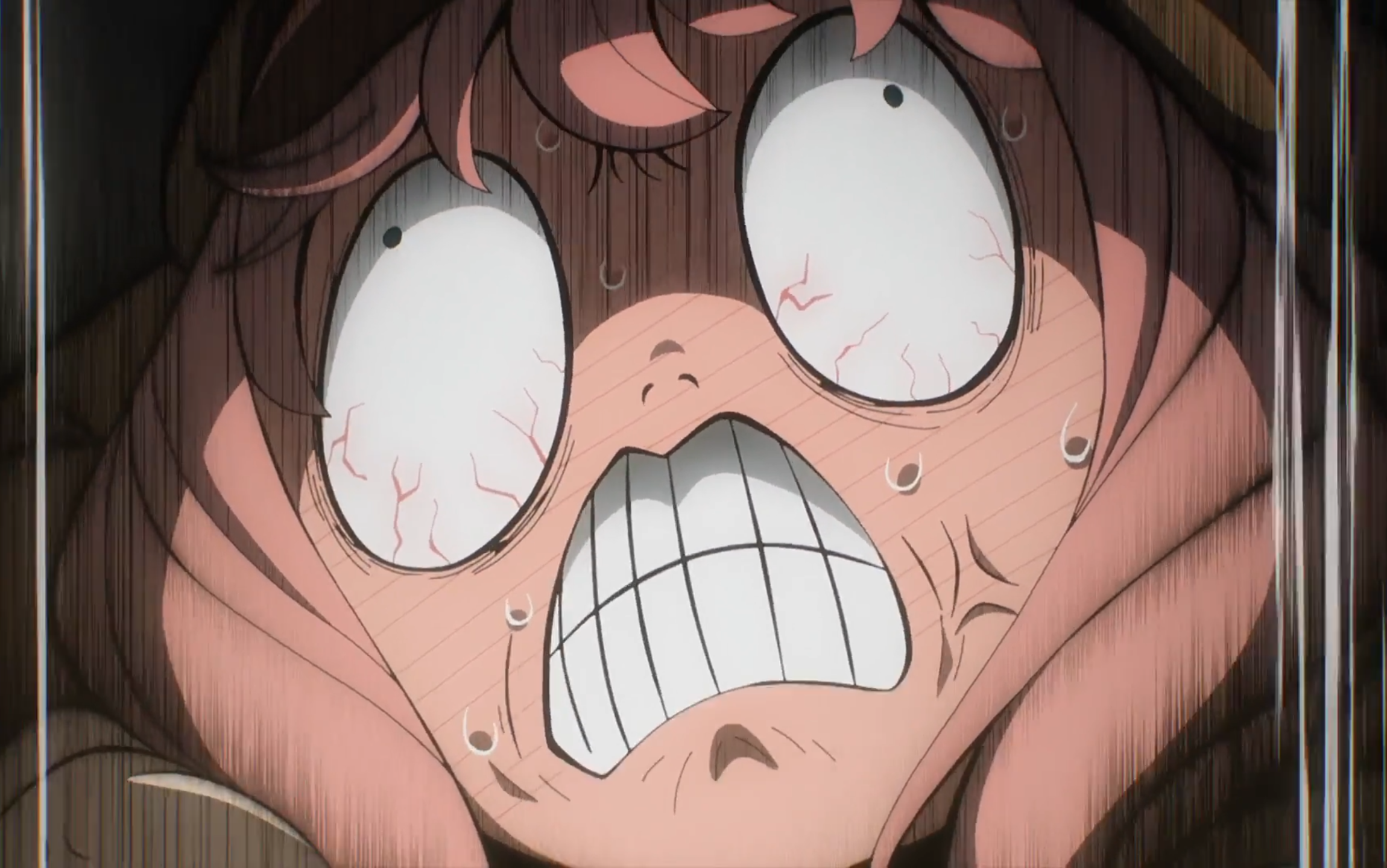What’s that glove thingy good for?
It’s a cast for injuries.
Now you tell me what the bottom thing is supposed to be.
It’s an impossibly large gearbox. Even smaller ones would take decades of turning the first cog to move the last one.
Are you saying you move the first one and it takes years before the last one moves? Meanwhile all the ones in between are moving the whole time? That sounds impossible!
I don’t think the 3d printers out there are a significant producer of plastic waste in the grand scheme of things. They can actually prevent a lot of waste by making replacement parts or fixing something to meet a new use case.
But the narrative that they were going to revolutionize everything comes out of this idea that things are generally improved by the production of more stuff, more niche gizmos and doodads. It is a facet of the thinking behind over consumption.
Often that kind of thinking even gets in the way of implementing solutions to real problems. Much easier to sell people on an ineffective solution based in more stuff than a solution that requires them to alter their life style or accept a little inconvenience.
3d printers are just tools, but the idea that new tools are all that is needed to solve issues is a huge problem.
Most of the guys I know who have 3d printers are so eager to have someone ask them to make a specific thing for them on the 3d printer, and it’s always really practical makes.
That’s me. Sort of. Don’t get me wrong, my wife is rapidly running out of room in her office for all the cute animals I have printed for her (that she didn’t ask for, I just surprise her with them sometimes 😅).
But I’ve rapidly reached the stage where I want to print but have covered most of my own needs for printed stuff. So any time anyone asks if I can print something, I’m thrilled.
I mean, making cute animals is part of most hobbies. I have created more little animals with crochet than I can count, and I don’t necessarily see 3d printing as anymore wasteful than crochet
Yeah I’ve done a couple prints for friends or relatives. My most recent print is a simple miny peg-chess set so I can learn from my chess books with a physical board and pieces.

Not exactly practical, but still useful.
I’ve successfully solved several real life problems with my printer, and it’s always nice to find something practical to make or fix.
It’s tools and behavior that will produce change. If we have the tools but fail to change consumer behavior, overall change will be negligible.
If I use a 3d printer to print all the replacement parts I would have had to order specially otherwise, I am benefitting from the tool. But if those facilities keep making the parts I used to order, and the market overall focuses on ordering rather than making, not much environmental benefit is made from me not having things shipped to my door.
That doesn’t condemn the tool or the market, but the problem is this technology can’t have greater impact unless it changes consumer behavior at a critical mass, rather than just hobbyists.
I like 3d modeling cute lil creatures and printing them ;_;
I highly doubt that 3D printing of all things is making any meaningful contribution to the microplastics problem. Plastics are absolutely everywhere, so it feels weird to pin blame on a small group of enthusiasts just making silly shit at very low volumes.
I fucken repair shit with 3D printed parts so that I don’t need to buy new shit.
How often do you break things that can only be repaired with 3D-printed parts? I once printed a fridge handle that was a very specific shape. Other than that it’s zip-ties or glue.
Its more often that I get my hands on something in need of minor repair, perhaps a part. Newer devices arent always easy either - I’ve had trouble finding parts for a robo vac thats 5 yrs old, for example.
Smaller electronics that rely on special plastic clasps or hinges, think ITX computer cases or something like a game console or laptop. 3D printers are nice because then you don’t have to play Ebay part roulette or hope someone manufactures the particular part that snapped in half.
Not only that but most 3D printing is done with PLA which doesn’t generate meaningful microplastics. I mean, it does but they only last a short time out in the wild. A study funded by the state of California found that PLA will last up to three years of left out in the environment (e.g. not in a trash dump).
Three years is nothing. Also consider that many animals can eat and digest PLA. Furthermore, if it ends up in your body it will eventually be broken down.
The real microplastics problem comes from tires and plastics like ABS that are used in f’ing everything. ABS microplastics last like 400 years or something like that.
Other plastics last even longer but the studies I’ve looked at all suggest the same thing: Tires and ABS.
Even PET water bottles aren’t as bad because they only last 80-100 years (until *fully" broken down). That sounds like a long time but also consider that PET fibers are mostly inert and don’t seem to absorb and re-release nasty things like ABS.
Don’t get me wrong: PET microplastics (which mostly consist of tiny fibers from textiles—not from bottles) are 100% a problem. They’re just a fraction of the problem of everything else.
For reference, the biggest problem with PET fibers is that they float and can be carried by the wind. That means they tend to settle on top of soil which causes it to absorb more heat and retain less moisture… Requiring more watering. Whereas the butawhateverthefucktoxicshit that tires break down into can result in soil that’s harmful to life (in general). Enough of it and nothing will grow at all.
That’s why you rarely see weeds sprouting up from kids playgrounds that were filled with chopped up car tires. Well, that and the fact that they can get really hot.
It’s the individual responsibility argument of environmentalism all over again. It’s mostly large corporations dictating law to do very intentional things at often incomprehensible scales that is responsible for the vast majority of pollution, and it’s those same large corporations which promulgated the notion that environmentalism is everyone’s equal responsibility and if you don’t recycle your plastic bottles or drink through a paper straw you’re the problem.
This isn’t to say that individuals should not be environmentally conscientious, but it shifts the blame to be woefully incongruous with reality and leads to individualist virtue contests like this post.
It’s not that deep I just wanted to satyrize 3d printer enthusiasts cause it’s funny
Oh yeah no shade on you, it made good ground for thought/discussion.
I agree with this sentiment, but at the same time the only reason these companies exist is because people pay them to do what they do; therefore, individual responsibility is simply to not buy dumb shit you don’t need. Thrift stores are a great place for environmentalism, as one item purchased there is one item that isn’t made new. More people doing so will turn the economy more and more into a circular economy where goods simply change hands locally rather than created on the other side of the planet and moved to the other side of the planet.
Behind every company (or group of companies) destroying the environment, there’s a clueless consumer paying them to do it.
get outta here with your “individual responsibility” bullshit. Free market capitalism prevents such individual considerations from making a difference. So long as you’re allowed to act unethically with no cost, unethical behavior will be a common strategy. The only real way to change things is for unethical behavior to be the least profitable option for individuals, otherwise the mechanics of markets necessitate it will happen on mass.
We aren’t dealing with individual choices, but evolutionary selection pressures. If you think in terms of “individuals” or “responsibility” you’ll never come close to addressing the problem.
Honestly, I think “voting with your dollars” is equally as bullshit a propagandized myth as “environmentalism is everyones equal responsibility”. And just like the latter, I don’t mean that you shouldn’t always be trying to do the right thing for ecology when you can as an individual. I mean more that these ideas are designed to route us away from actions that can be truly effective, which strike at the root of the institutional problem, such as abolishing economic policies that create situations where corporations can externalize their waste onto the world in the first place. You simply cannot get to such a state by “dollar voting” or selective consumer boycotts. Definitely do promote living in a way that limits your individual impact, within reason, just don’t delude yourself into thinking that is any sort of solution to the issue itself. You are forced to be a liberal consumer, and so long as the institution remains, that is what you will remain. I think we have much more to gain by rallying around the common enemy of capitalism and corporatism than we do in shaming or otherwise pressuring our peers to restrict their own personal economic choices even further than they have already been. Because we really aren’t just “clueless consumers”, none of us are. We are individuals with needs, wants, fears, stresses, worries… And if we are presented with actions to take they really need to be actions that lead to meaningful change rather than ones that just cultivate self-resentment.
This seems a bit strawman to me, no? The people who are doing crazy builds with hundreds of parts are often doing it specifically for your social media impression. Most of the stuff I print on my Prusa is small parts for my bikes or my car. Little missing pieces of fixtures around the house. If I’m ever printing something feckless it’s because a friend really wanted a 3d articulated slug. I will say though, the waste plastic from edges, supports, failed builds, etc adds up over time and it’s dead-end waste like most other plastic. I have several paper grocery bags full of the stuff. But that’s exactly why I don’t like printing feckless crap.
I’ve seen a video of someone experimentally recycling that into new filament. Unfortunately, there’s probably not a commercial product for that.
Also, if I recall correctly, they had an issue with keeping it at constant width.I did a little reading up on it. Apparently it’s hard to make it work unless all the pieces you’re melting are the same size, and any impurity, even dust, can cause issues. And that’s before you even get to the point where you’re trying to extrude a perfectly sized filament.
Also, given how cheap the filament is, there probably isn’t enough incentive to do this on a commercial scale. Otherwise someone could design a machine that could be sold to shops that sold 3d-printing stuff so they could recycle filament for their customers.
There are a couple of commercial solutions out there, and the fancier ones have sensors that measure the width and makes adjustments on the fly
They are quite pricey though, the cheapest one i found (a couple of years ago) was priced at like 10k$
I don’t hate 3d printers I think they’re an awesome technology, but enthusiasts sure love printing bullshit
It’s easier to print bullshit than to learn cad. I’m learning to model by printing gridfinity organizers. It’s easy and practical. I waste less time searching for junk and waste more time modeling the bins. 👍
I think using 3d printing as a way of learning CAD is great! Definitely a great learning tool for kids and students and such and also adults
I think I just view people who print other people’s designs for silly reasons in the same way that I view GenAI prompters who call themselves artists unironically. Like, my guy, you just pressed enter and something else did all the work. Use it as a tool to extend your creativity if you want, not as a substitute! You’re not a bad person if you use it as a substitute, it’s just confusing to me and seems like a waste of time and resources
But then again, I’m basically just saying “stop having fun” so I don’t really think it’s that much of an issue
I feel really uncomfortable in the online maker space at times. It’s filled with crypto bros and zionists. One of the most downloaded prints one week was one of Trump assassination attempt. Can’t tell if it’s to grift or keep. Unnerving community.
Here I am as someone who’s never actually printed someone else’s model. The waste I contribute is due to my lack of foresight when designing in 3D space regarding what I actually need from a mechanical perspective for whatever I’m needing.
Designed and created some stackable ammo trays recently… great idea but the first prototype failed; poor execution. Yeah I mean it was something I did on my lunch break (only 15 min!) and 8 hours of printing lol.
But still, the point is that even a licensed ME like myself, who’s well versed in cad, can still learn from prior art. Sometimes, MOST TIMES, someone has already done it—and better than your low effort shit.
what’s the bullshit gear thing in the bottom example?
Many reduction gears, so each turn of one is a fraction of the turn of the one next to it. Pretty pointless.
ah ty
but enthusiasts sure love printing bullshit
Back in my day, 3D printing enthusiasts printed stuff to tweak their 3D printers. 3D printers print prints for printer printer’s printers.
A lot of them are, but this kind of bullshit is the kind of thing that will have a lot more visibility than the rest because it is usually what gets shared and shown.
The vast majority of what I’ve printed I never bothered sharing because it is custom made so specifically that nobody else would find a use for it. Or it is something that is so boring that even though I’m happy to have printed it instead of buying it, it is still a boring household object that nobody would care about.
I MUST see a video of those gears running
Iirc thats a device that exponentially turns slower and slower. Something like gear 1 turns every second and the last gear will move 1 tooth every 100 billion years or something stupid like that
Conversely, turn the gear at the other end and see the first one move at warp speed for a second before it all comes undone or friction welds itself in place.
the most useful things I’ve made with 3d printers are tiny, I feel like there are better tools for making larger things
People often use biodegradabble printing substances so that’s not that big of an issue. (Sometimes)
I thought for a long time that PLA was biodegradable, but turns out it isnt really. It doesnt compost in nature, it just breaks apart into microplastic. It needs active heated industrial composting to actually degrade into something harmless.
Yes, almost all store bought items that are “bio-degradable” will not degrade in nature and require industrial compost facilities. You’ll often see warnings like:
Biodegradable*
*where facilities exist
For additional “reading” on the topic, makersmuse has a good video about this: https://youtu.be/jCsnVp6mEbk
For this reason, I started looking into trying out PHA (allPHA from colorfabb I think) which supposedly fully biodegrades. I nabbed a spool but haven’t gotten around to printing with it since I print pretty infrequently. If it goes well, I’d like to make it my default prototyping filament. (Currently I use rPLA which is just post industrial recycled, and algae fill PLA for non-mechanical stuff).
This is a common misconception. PLA is technically compostable industrially, but it will be very slow to break down naturally if you just leave it outside. It can take about 80 years, which is a lot better than other plastics, but it’s a bit misleading that it’s called biodegradable. There are true biodegradable filaments like PHA, but they’re a lot less common.
That being said, 3D printing is actually really useful, and not a significant part of the plastic waste problem.
PLA microplastics take three years. That 80-years figure you’ve got in your brain is for PET:
(BTW: That study is brand new! From a few days ago.)
There’s some confusion about how PLA breaks down because there’s remnants after the 3-5 years where it’s not detectable anymore. Those remnants are not microplastics at that point. They’re just the base components (e.g. lactic acid) that can last a little bit longer.
Some colorants can last a really long time but I haven’t looked into those as much as I have plastics.
BTW: The “sparkly bits” in “silk” filament is just mica powder (iron). It looks like it might be harmful but it’s not.
I think the 80 year figure was for PLA, as PET lasts well into the 100s of years (450 is the number I’ve seen)
This article claims 80 years https://3dinsider.com/is-pla-biodegradable/ but I haven’t taken the time to do proper research about this.
It wouldn’t surprise me if the science on this is divided, especially because conditions (and the shape of the object) vary so much. It seems very plausible that a thin injection molded PLA cup could break down really fast in a sunny pond in a warm climate, but a thick 3D printed object buried in the ground somewhere with a cold clinate could take many decades.
Anyway, it sounds like it’s maybe not as bad as I thought, but it’s still not good to treat it like typical biodegradable materials. Especially when pla microplastics are still harmful despite being shorter lived.
A 3D printed PLA object would degrade faster than an injection molded one. Because the layer lines provide much, much more surface area for bacterial infiltration.
I read a study about that specific thing once but I searched just now and can’t find it (from my phone). I’ll search again when I’m back at my PC later so I can give you a link but… That makes sense, right?
For plastics like PET and ABS microbial breakdown doesn’t occur but with PLA and PHA it does. The more surface area, the faster it can be broken down.
Whereas with ABS and PET, the more surface area, the faster it will turn into long-lasting microplastics.
Seems to me like the second thing is a foot massager roller.

No it’a a clock where the golden wheel makes one turn every gogol years or something stupid like that. It’s just a bunch of reduction gears
That’s why i’ll never buy a printer with an mmu. Multi print heads is better anyways. (although those are like multi-thousand dollars usually and I just have an ender 3 lol)
Idex is great too and can be super cheap (see: svo4) but no one cares about it for some reason even though you could do super cool things like multimaterial, printing support material vs infill with a wider nozzle, or printing two different parts at the same time.
I got an ams and I don’t do typical multi material prints, I just use it for switching filament at layers for multicolor and for not having to manually switch filaments between prints. Takes a lot of the manual stuff out of the equation for me and I’m not generating extra waste with it!
Isn’t PLA biodegradable though, so not really a microplastic problem.
Biodegradable with industrial composting* Otherwise it breaks down like any other plastic.














